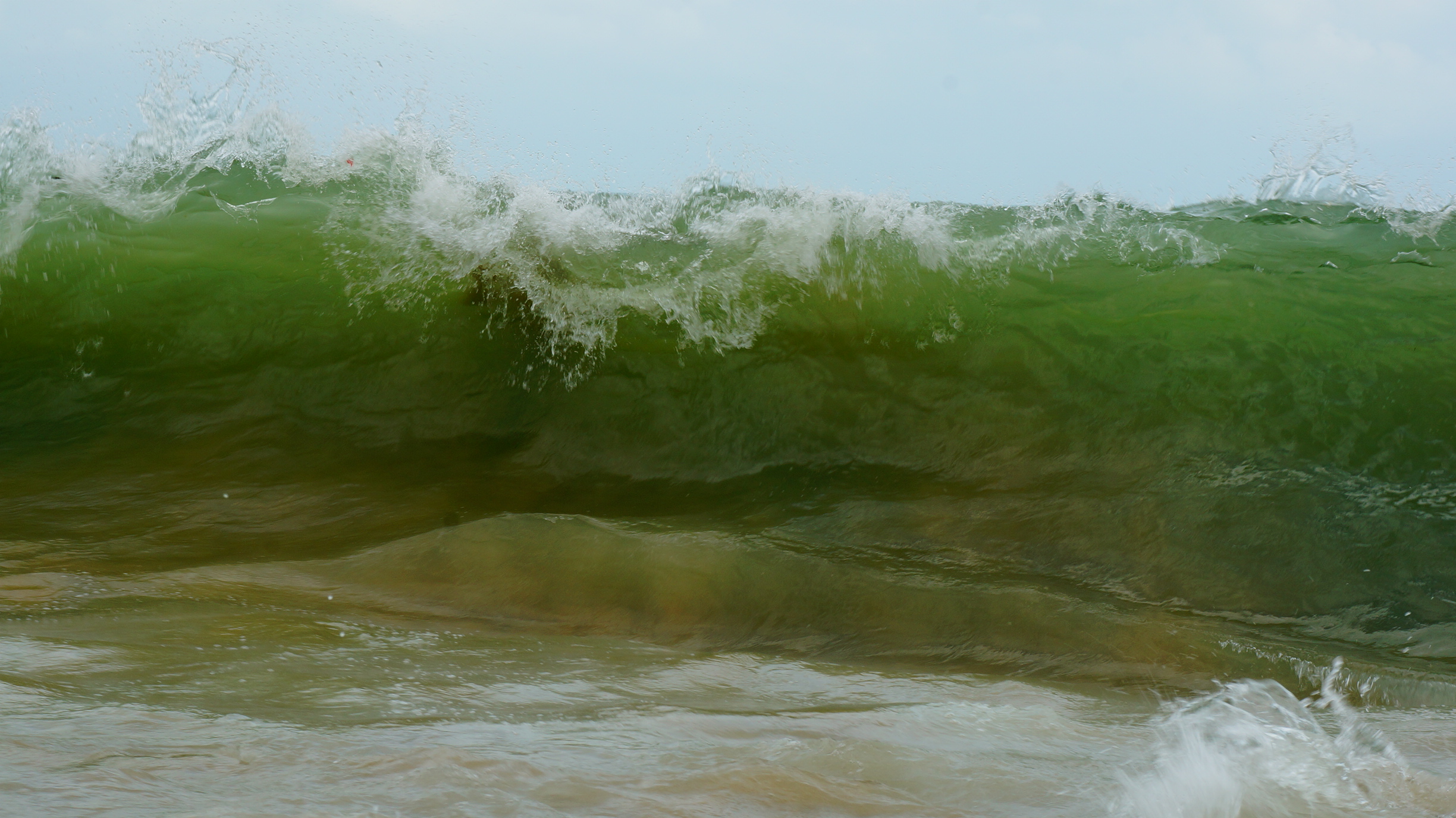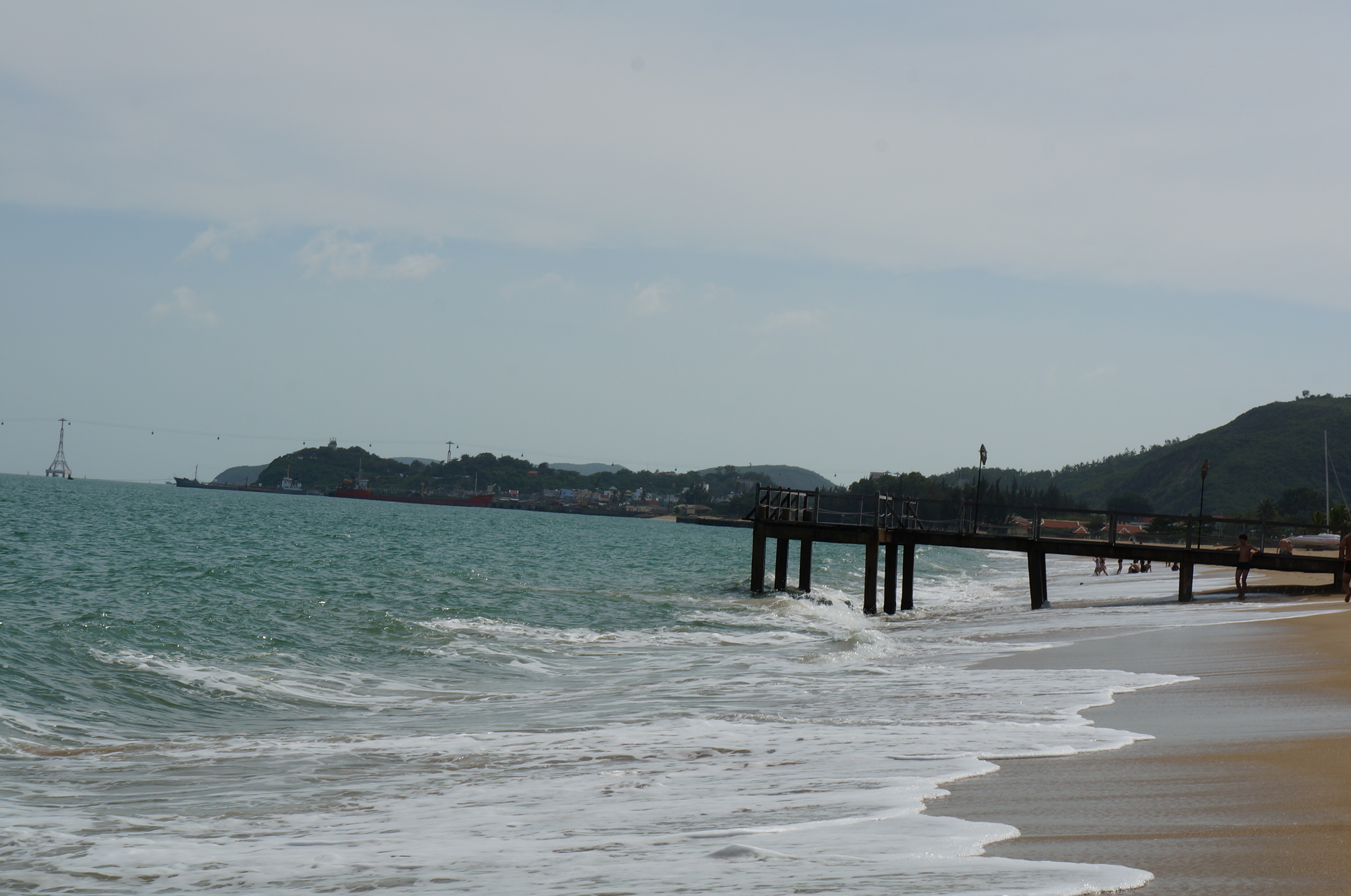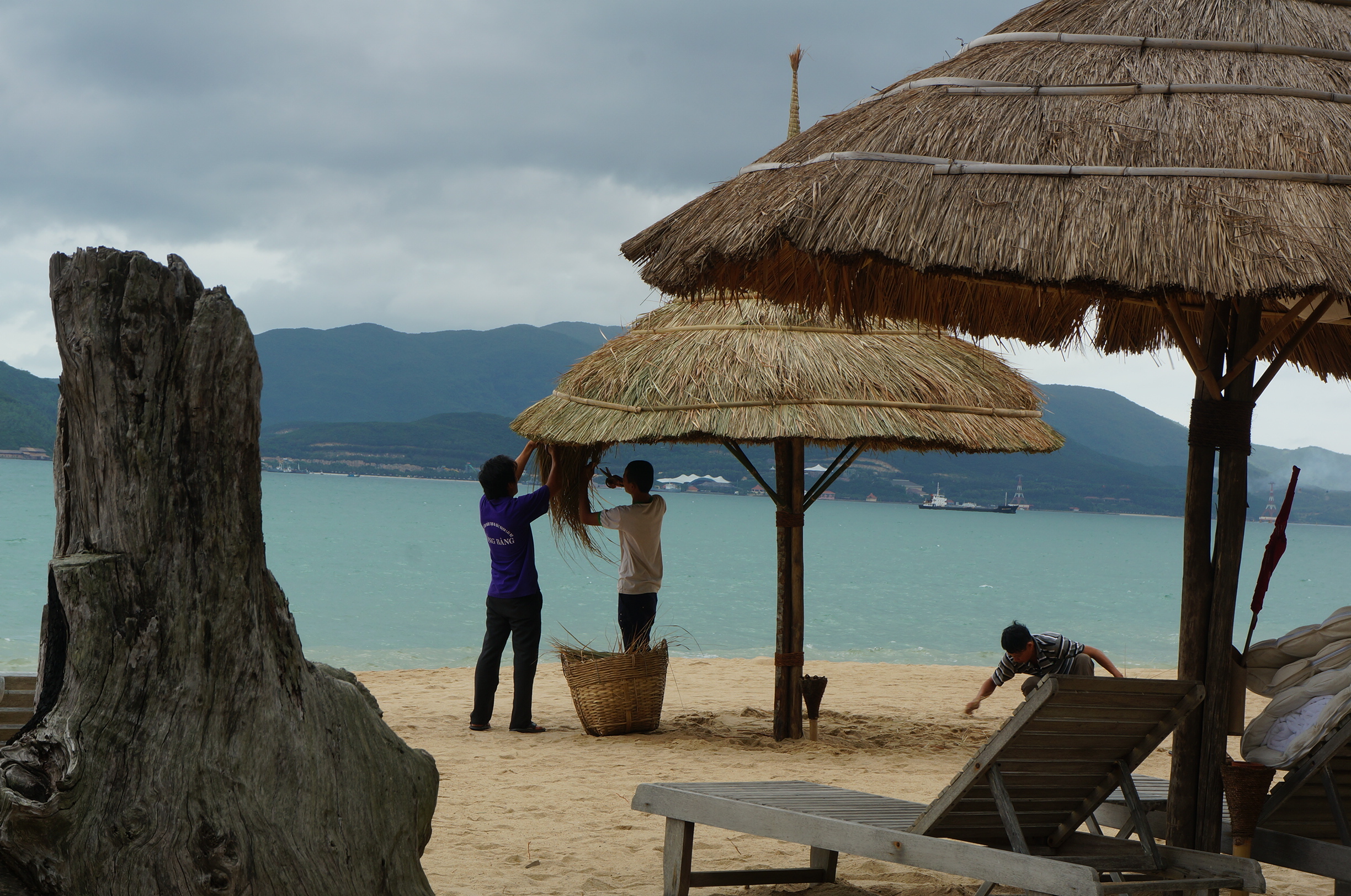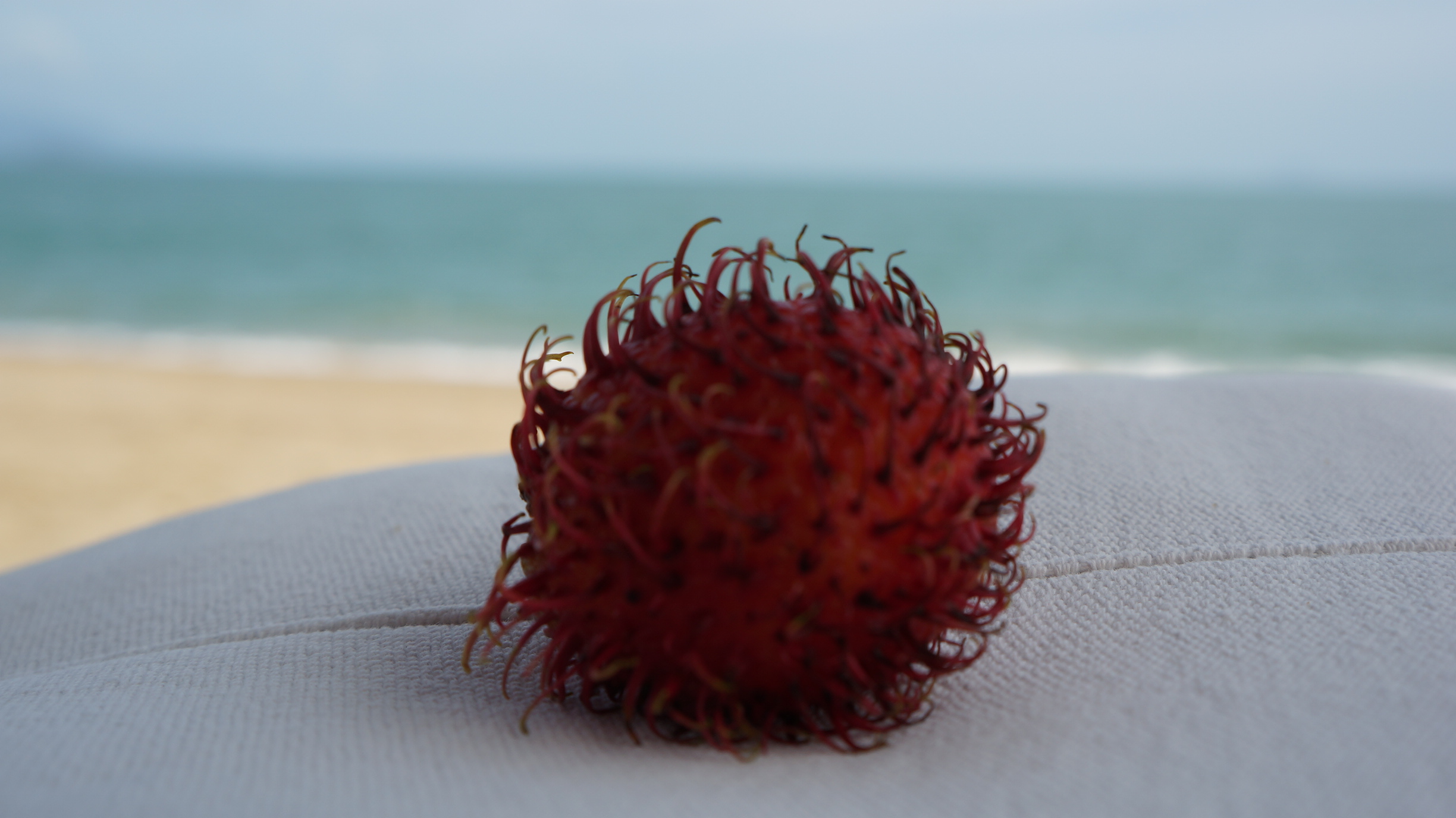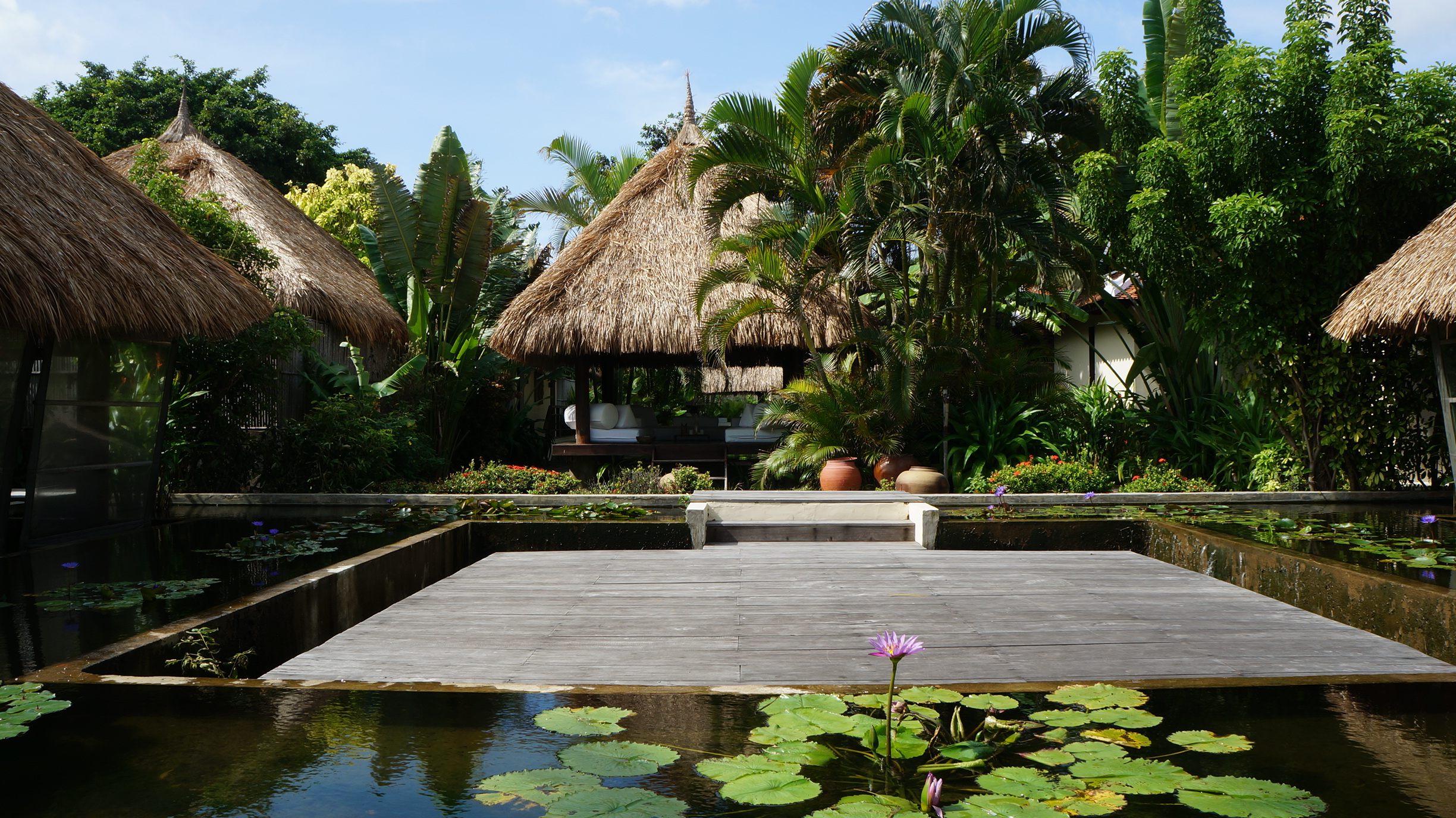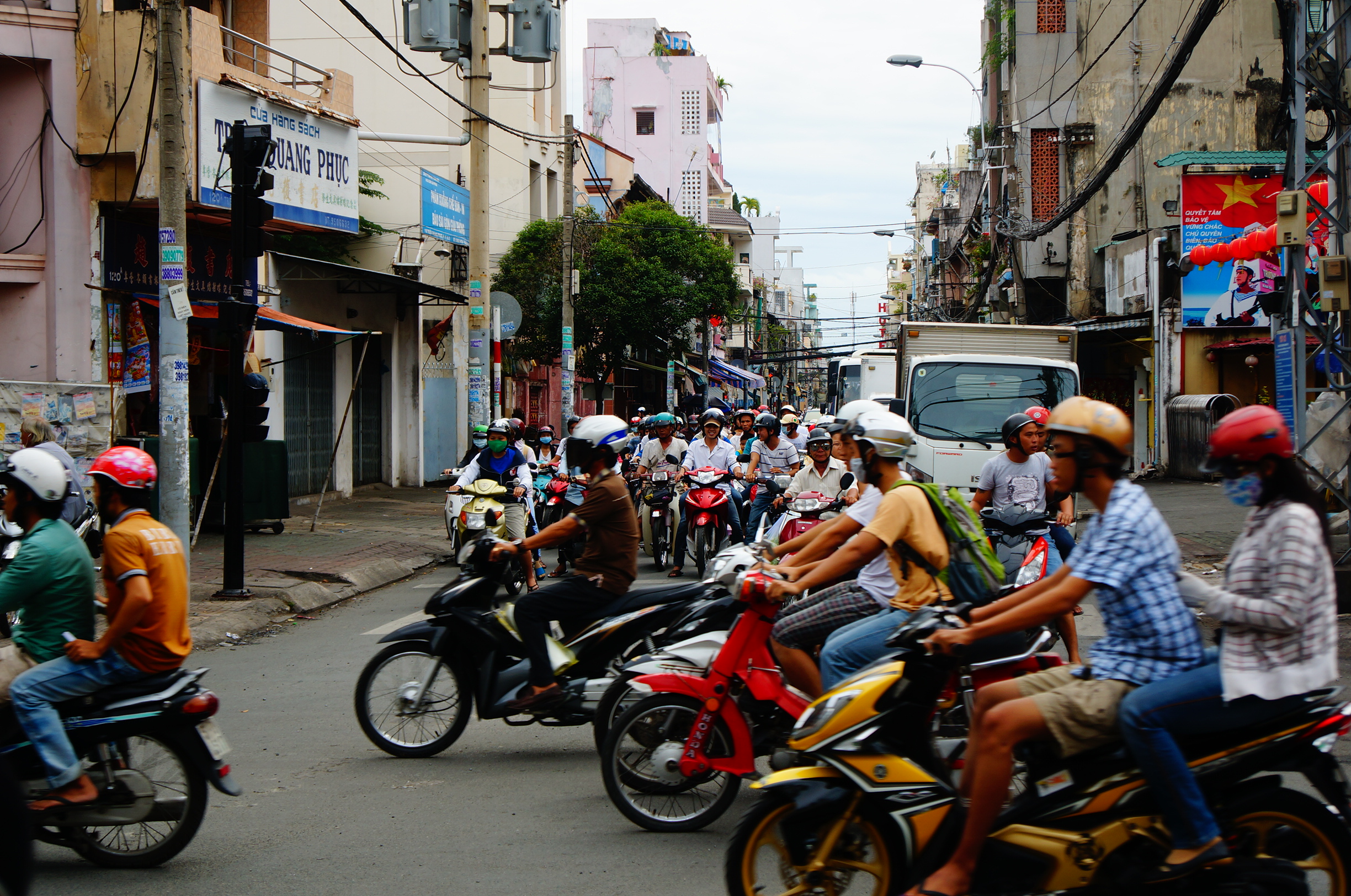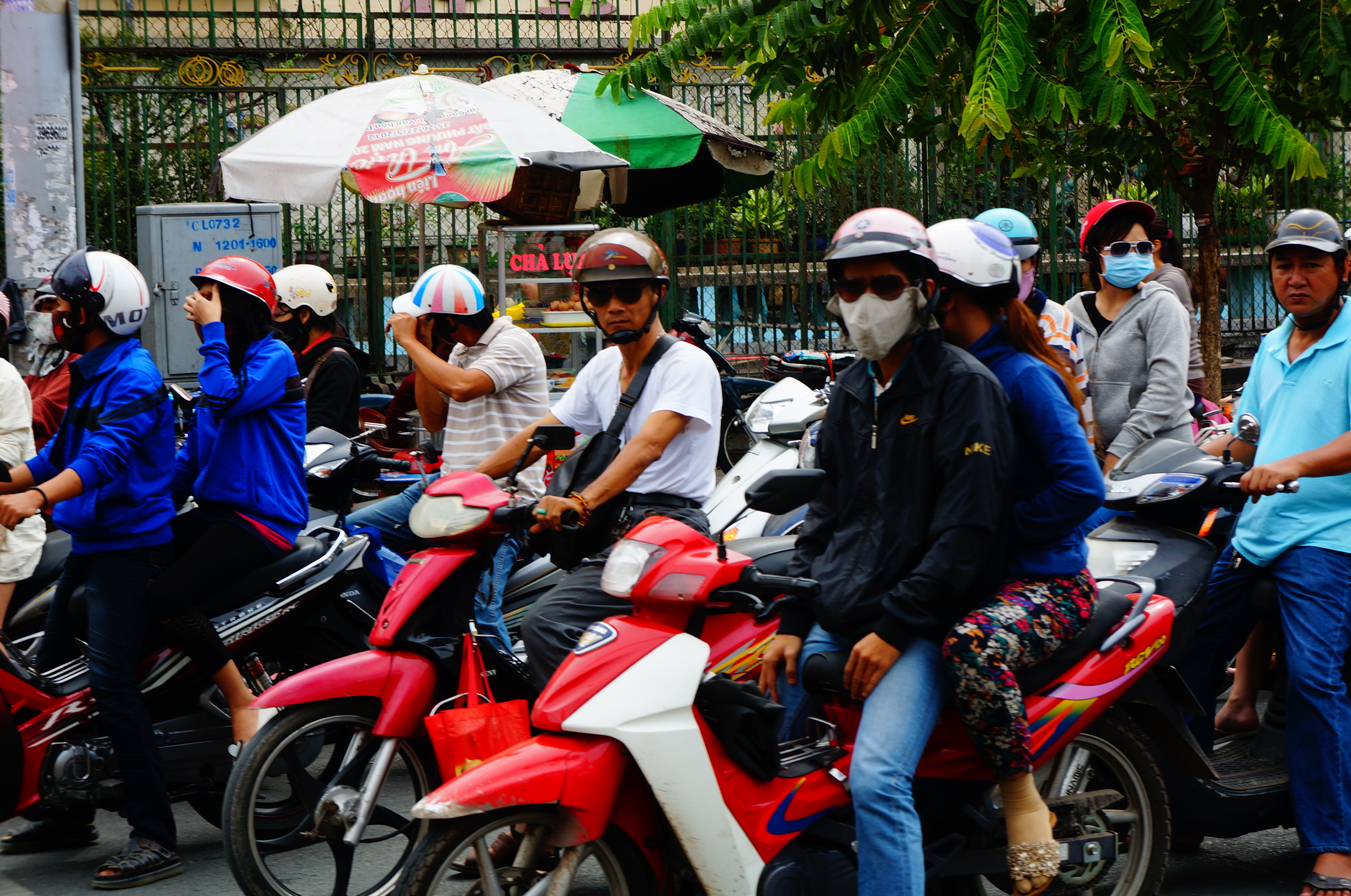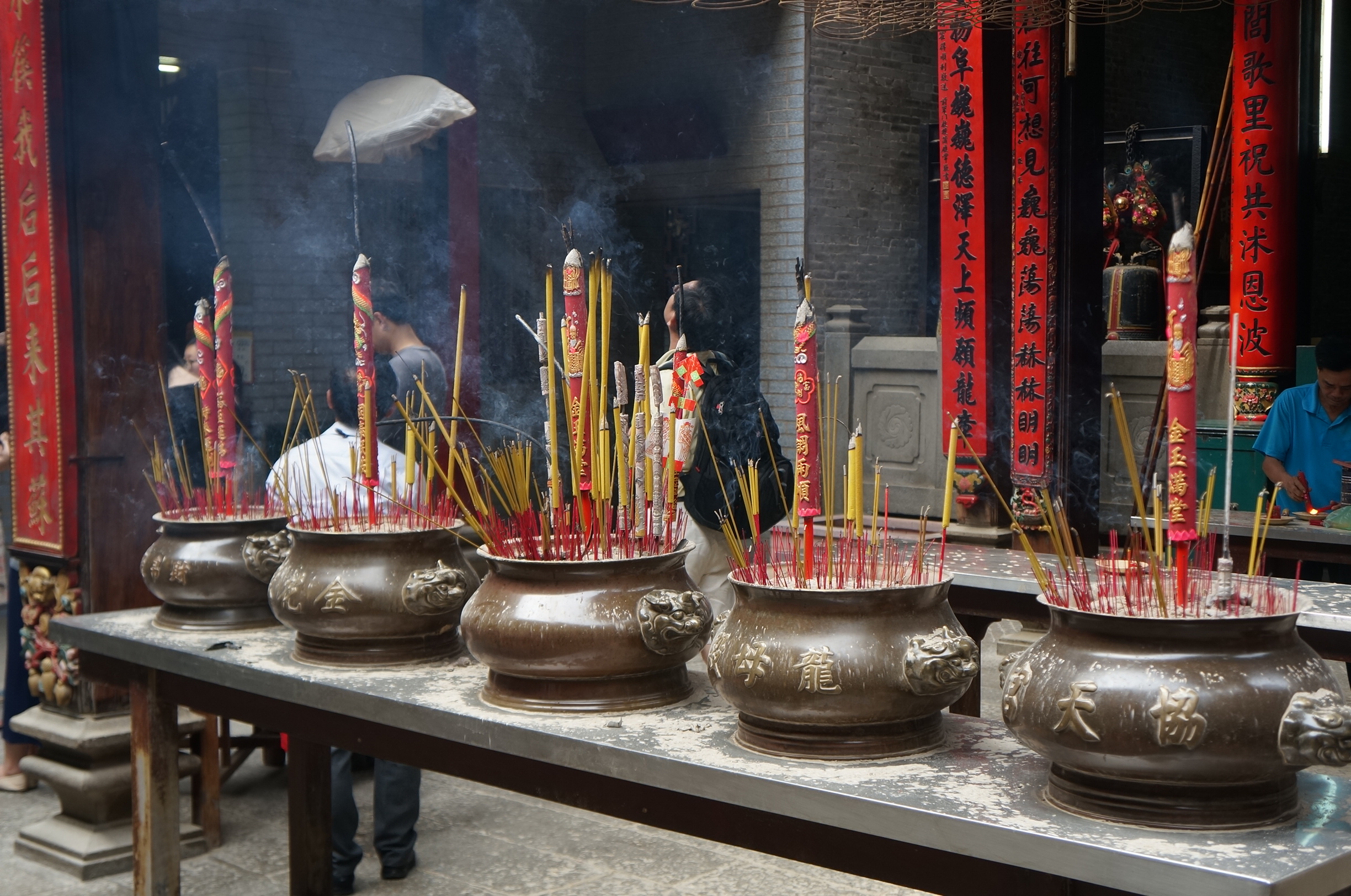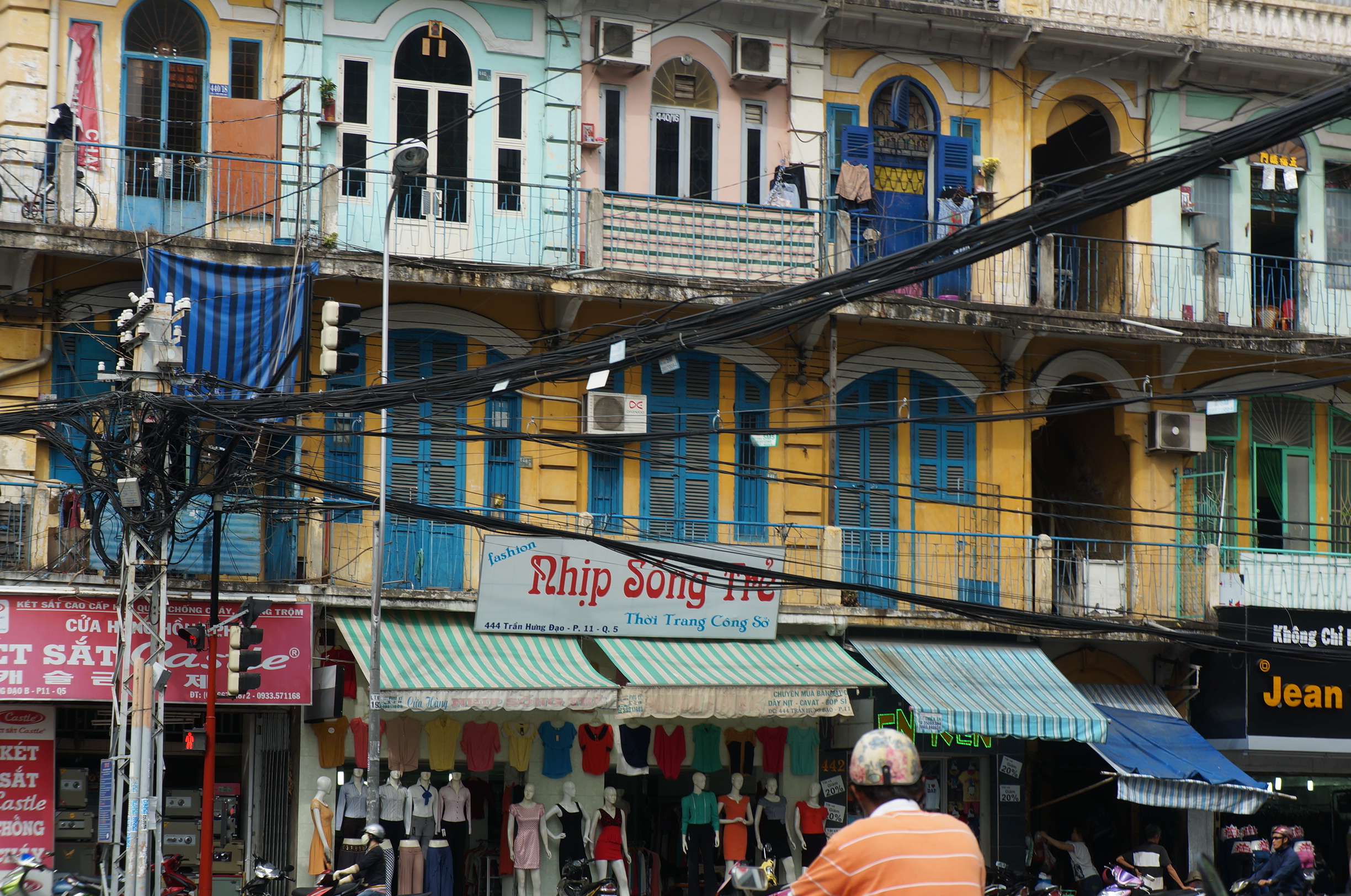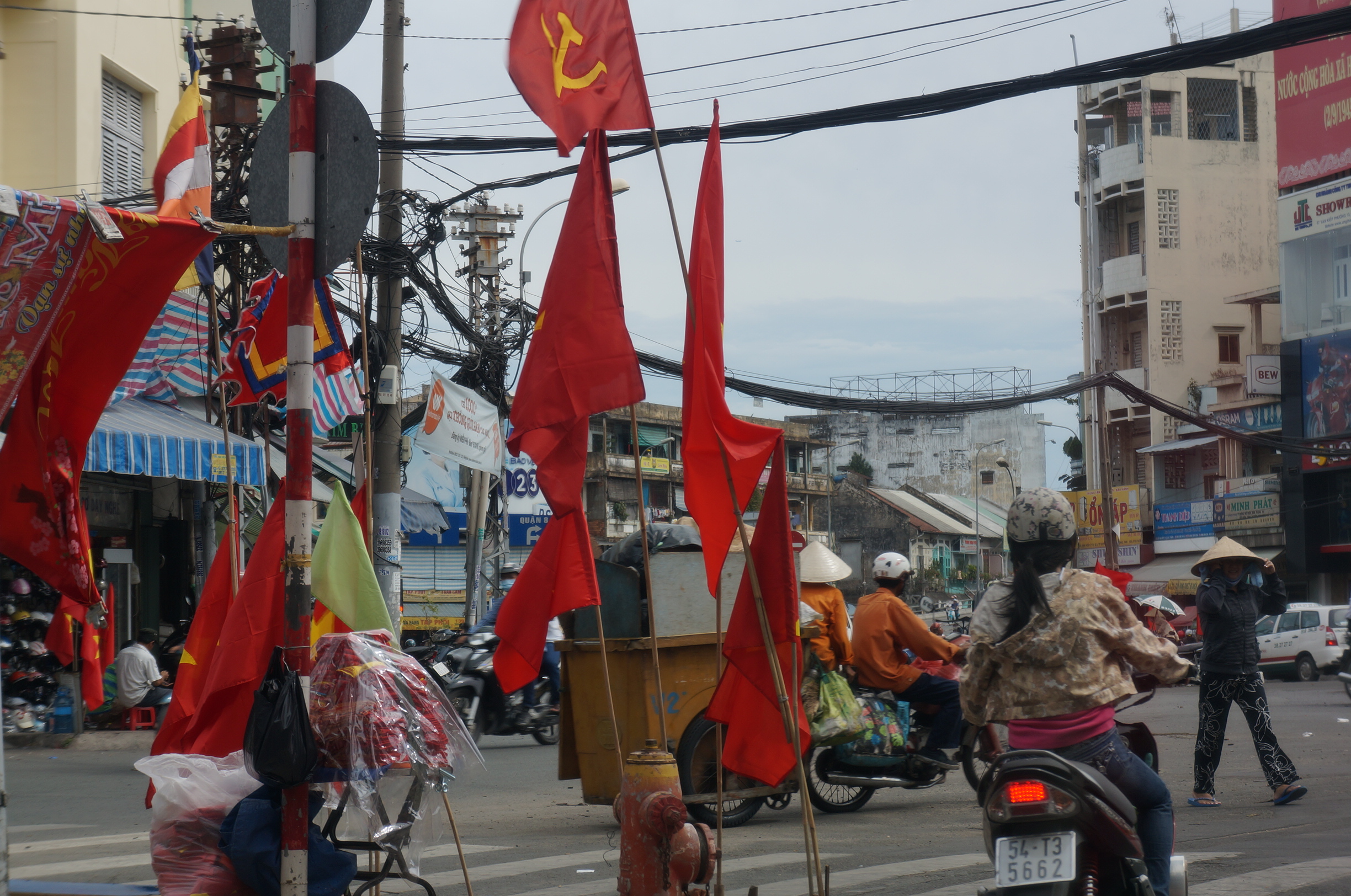(For English version please scroll down the page)
Ir ziema, decembris. Jūs izkāpjat no lidmašīnas un ieielpojat krūtīs tik ilgi kāroto tropiskā gaisa malku. Mētelis un džemperis zem tā šķiet neticami nesenas pagātnes liecinieki. Viss, ko vēlaties – noglabāt ziemas apģērbu tālāk no acīm un uzsmaidīt saulei. Sajust zem kājām svilinošas smiltis un vērties kobaltzilā horizontā.
Okeāna viļņu varenums Natrangā
Ūdens – zils, putojošs, ar milzīgiem viļņiem, kas gāžas pāri un notriecot no kājām, izmet krastā. Jau pēc brīžā jūs atklājat mazu triku – galvenais, tuvojoties vilnim, mēģināt pacelties tā virsotnē, jo tikai tā iespējams izvairīties no sajūtas, ka esat nokļuvuši veļas mašīnas centrafūgā. Pēc brīža smiltis ir visur – peldkostīmā, matos, mutē, bet jūs smaidāt ka bērns. Jo okeāns, tik brīnumains un pārsteigumu pilns, aizved bezrūpības pasaulē, kur pazūd ikdiena, stress un problēmas. Ir tikai bezgalīga laime.
Smiltis ir rupjas, ikkreiz uz tām uzkāpjot zem pēdām iespējams sajust miljoniem akmentiņu. Gluži kā skrubis, tie kutina katru soli un vakaros pēdas sāpīgi smeldz. Un tomēr, katru rītu, pulksten astoņos, es atveru acis un piedzīvoju neaizmirstamu pusstundu. Ikrīta skrējiens gar okeāna malu sniedz nebijušas sajūtas – priekšā plešas bezgalīgi gara krastmala, kuru ik pa brīdim pārtrauc tikai ūdenī iestiepušies moli. Uz tiem pulcējas zvejnieki, kuri ierodas līdz ar pirmo gaismu, lai vēl rīta agrumā lomu nogādātu tirgū vai mājās.
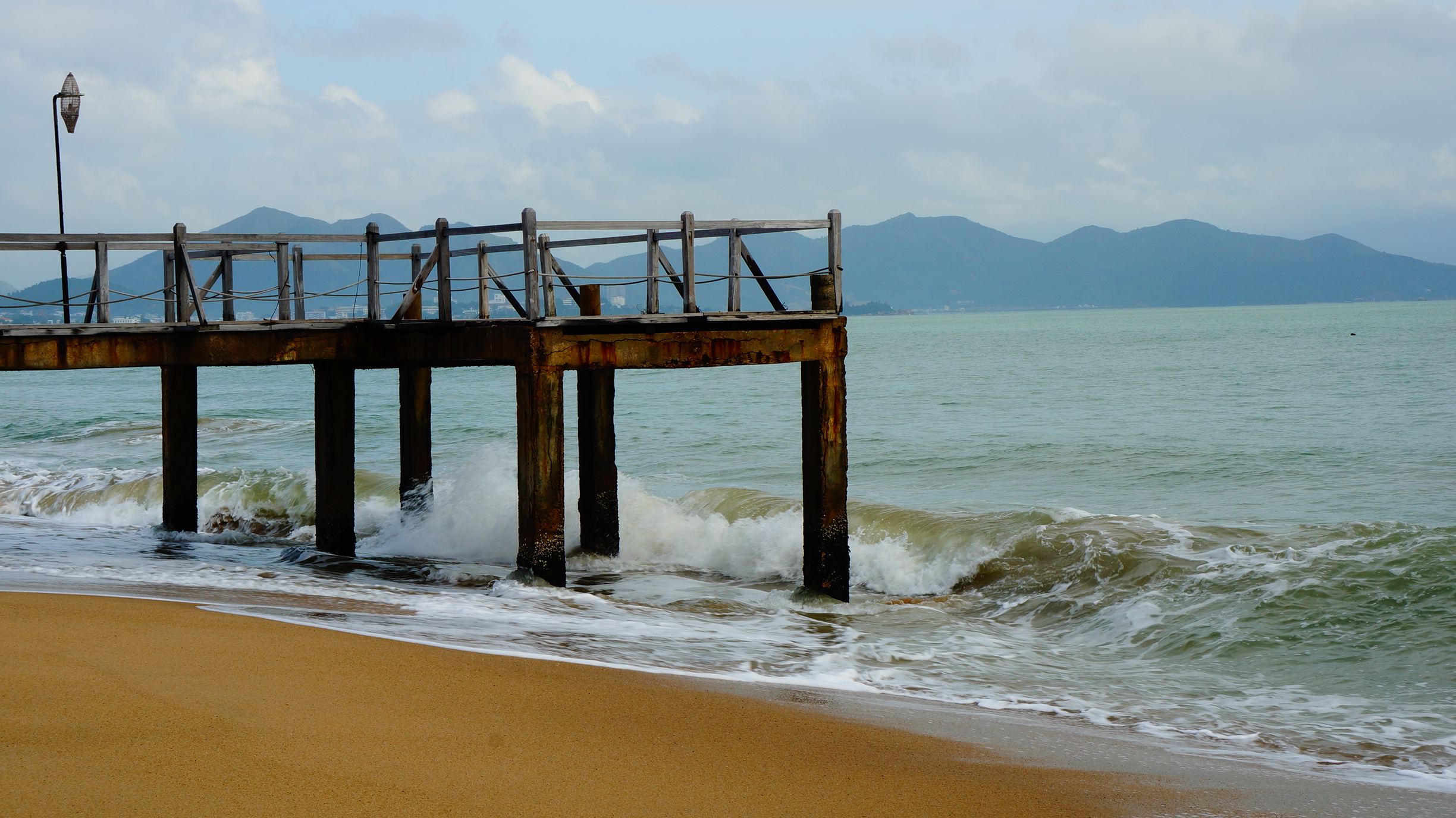
Skrienot jau par tradīciju kļūst kāda vietējā večuka bezzobu smaidīgais sveciens. Izģindis, ģērbies krāsainā T kreklā un mūžvecos šortos, viņš katru dienu sēdēdams krastmalā, smaidīdams māj ar roku un sveicina. Gluži kā no okeāna izskalots gliemežvāks, viņš bezrūpīgi atpūšas saulē un izskatās, ka vienkarši bauda pensijas dzīvi. Tā nu viņš iedarbojas kā pozitīvs dopings, liekot nepadoties un par spīti asajām smiltīm pievarēt uzstādīto maršrutu.
Natranga ir tipiska Vjetnamas pilsēta ar daudziem iedzīvotājiem un vēl vairāk mopēdiem. Tā pa īstam nekad neaizmieg, jo mopēdu pīpināšana dzirdama visu nakti. Piecos no rīta, kad jau izpraukušies pirmie saules stari, ielas ir cilvēku pilnas un neskaitāmajos ielu tirdziņos tiek cepts un vārīts ēdiens. Nav pārsteidzoši, ka vietējie ceļas tik agri – dienā temperatūra visu gadu turas vidēji ap 32 grādiem un vienīgais glābiņš no svilinošā karstuma ir agri rīti un veldzējoši vakari pēc saulrieta.
Saulei pazūdod aiz okeāna horizonta, ik uz stūra sāk skanēt mūzika, cilvēki uz ielām kļūt divreiz vairāk nekā pusdienlaikā un iestājas mērens haoss. Pabāzt degunu pilsētas ielās gribas tikai uz mirkli un arī tad vislabāk to darīt vēlā vakara stundā pārvietojoties uz velosipēda (ar noteikumu, ka nekur to bez uzraudzības neatstājat, jo tad tas pazudīs ātri vien). Pārliecinamies, ka šajā pilsētā vislabāk baudīt piekrasti, ne ielas murdoņu, tāpēc jau drīz ātrāk gribas atgriezties paradīzes nostūrī pie okeāna.
Tur, sēžot krastā, skatoties milzīgā, apaļā mēnesī un klausoties viļņu triecienos pret krastu, var baudīt labāko, ko sniedz šī neparastā zeme. Te var atgūt spēkus, relaksēties un ieklausīties sevī.
Īpaša vieta, kur iespējams pilnvērtīgi atpūsties (paslēpties no steidzīgās pasaules) un nakšņot bungalo tipa mājiņās, ir neliels teju paradīzes nostūris Klusā okēna piekrastē – Six Senses Evason Ana Mandara (www.sixsenses.com). Zaļi tropu dārzi, hipnotizējošs miers, ekoloģisks koncepts (šeit neatradīsiet nevienu plastmasas maisiņu – viss balstīts uz otreizējo pārstrādi) un spa, kur nogurušos lutina profesionāļi. To pilnīgi mierīgi var dēvet par pelnītu sevis palutināšanu trīs vai vairāk dienu garumā, pirms došanās tālāk Vjetnamas iepazīšanā.
Seši miljoni mopēdu
Jau piecas minūtes mēģinat šķērsot ielu uz gājēju pārejas. Ikkreiz, kad cenšaties spert soli uz brauktuves, jau tā nemitīgi pīpinošā automašīnu un mopēdu straume taurēt sāk vēl divreiz sparīgāk. Nekas cits neatliek, kā mēģināt nogaidīt līdz transporta straume uz brīdi samazinās (kas gandrīz nekad nenotiek) vai ievilkt elpu, aizspiest acis un drosmīgi doties pāri. Virsū jau nebrauks…. It kā. Hošiminas (Ho Chi Minh City) satiksme ir absolūts pierādījums tam, ka no avārijām veiksmīgi var izvairīties darbojoties pilnīgi pretēji jebkādiem ceļu satiksmes noteikumiem. Gājēju pāreju transporta vadītāji neievēro. Krustojumos ceļa zīmes ir tikai ilustratīvas dekorācijas – kreiso pagriezienu var veiksmīgi veikt ar intensīvas signalizēšanas palīdzību. Šajā pilsētā valdnieki ir mopēdu vadītāji un pārējiem (procentuāli ļoti mazai daļai) kam to nav, jāizrāda respekts.
Vairāk nekā 300 gadus vecajā pilsētā Hošiminā, kas agrāk bija zināma kā Saigona, plecu pie pleca mīt aptuveni 9 miljoni iedzīvotāju. Interesanti, ka būdama franču kolonijas sastāvdaļa, pilsēta tika paredzēta 450 000 iedzīvotāju skaitam. Vēlāk pilsēta tika paplašināta un iezīvotāju skaits palielinājās jau līdz vienam miljoniem, bet šobrīd tās teritorijā dzīvo jau 9 miljoni iedzīvotāji, nodrošinot Vjetnamas lielākās pilsētas statusu. Un to var just! Cilvēku straumes uz ielām plūst kā upes un vjetnamiešu vaibsti mijas ar ķīniešu sejām. Te, neiztrūkstoši kā citās Āzijas pilsētās, ir Chainatown ar izteiktiem ķīniešu kultūras elementiem – tempļiem, raibiem ielu tirdziņiem, restorāniem un neskaitāmajām bodītēm. Ķīniešu spēja svešās vidēs uzbūvēt tik spēcīgas kopienas un likt lietā paaudzēs iedzimto biznesa ķērienu ir apskaužama.
Bez Chinatown Hošiminā ir spēcīgi jūtamas citu kultūru pagātnes liecības kā, piemēram, franču koloniālā stila arhitektūra. Divus līdz trīs stāvu augstās celtnes, kas nokrāsotas spilgtās krāsās gluži kā raibas dejotājas iekļaujas pilsētas apbružātajā sejā.
Ne velti vjetnamiešiem mīļš ir teiciens: “Mans sapnis ir dzīvot franču mājā, ēst ķīniešu ēdienu un apprecēt japāņu sievieti.” Koloniālā stila mājas vietējie asociē ar labu sociālo statusu, ķīniešu ēdienu ar tā daudzveidību uzskata par bagātības vēstnesi, bet uz japānietēm met acis, zinot viņu pietāti pret stipro dzimumu – apprecoties, viņa savu vīru lutinās kā karali. Runājot par labklājību, nevar nepieminēt visuresošos mopēdus – uz tiem vienlacīgi tiek pārvadāta ne tikai ģimene, bet arī televizori, divmetrīgi matrači un citas saimniecības lietas. Un runā, ka lielākajam vairumam Hošiminas iedzīvotāju ir ne tikai viens, bet, iespējams, pat divi mopēdi. Ķīnā ražotu modeli var iegādāties par apmēram 300 ASV dolāru, savukārt Japanā ražotie var maksāt pat trīs tūkstošus. Miniet, kuri ir absolūtā vairumā?
Hošiminā noteikti vērts iestiprināties ar tradiconālo vjetnamiešu kafiju, kas ir rūgta un aromātiska. Spēcinošo dzērienu Vjetnamas iedzīvotāji patērē ar regularitāti trīs tasītes dienā – valsts ir lielākā Robusta kafijas pupiņu ražotāja pasaulē. Tradicionāli kafija tiek pasniegta ar virs kūzītes vai stikla glāzes novietojamu kafijas filtru. Caur to kafija pilienu pilienam lēnām tek cauri, līdz tasīte piepildās ar brīnišķīgi smaržojošu dzērienu. Nereti kafijai tiek pievienots kondensētais piens, kas padara rūgto kafiju maigi saldenu. Pēc tasītes vjetnamiešu kafijas sajūtaties kā iedzēruši Red Bull – enerģija ķermenī rosās ar dubultu spēku.
Ejot pa Hošiminas ieliņām, nemitīgi uzdursieties vietējiem ar tradicionālajām vjetnamiešu konusveida cepurītēm. Izrādās, tās ne tikai pasargā no saules svelmes un lietus, bet arī ērti lietojamas, lai, piemēram, mammām strādājot uz lauka kā improvizētā šūpulītī tajā ieguldītu mazuli. Cepurīšu jūklī novērtēsiet pilsētas kontrastus – piedrazotas ielas ar milzu elektrības mudžekļiem stabos, kas mijas ar uzkoptiem un bagātīgi apzaļumotiem pilsētas laukumiem. It visur bijušā prezidenta Ho Ši Mina un propogandas plakāti, atgādinot ka šī joprojām ir sociālistiska republika.
Asiņainā vēsture vjetnamiešus daudz mocījusi un īpaši sirdī aizķeras vietējo teiktā atziņa “Vjetnamiešu dvēsele ir kā bambuss – stipra no ārpuses, bet tukša iekšpusē”. Deviņu miljonu iedzīvotāju pilsētā šī atziņa kļūst vēl simboliskāka. Lai arī ārēji ļoti viesmīlīgi, atvērti un smaidīgi, vjetnamiešu acīs redzama piesardzība, jo katram šajos mopēdu, ēku un miljonu cilvēku-skudru džuņgļos jāatrod veids kā izdzīvot. Pat ja mēnešalga nereti ir tikai daži desmiti ASV dolāru, bet pilsētas lepnākajās vietās apartamentu cena par kvadrātmetru sasniedz Ņujorkas ekskluzīvo mājokļu cenas. Tāda nu ir kontrastu pilsēta – pārsteidzoša, mūžam kustībā un iekšēji trausla.
Strong soul Vietnam
It’s winter, December. You step out of the airplane and breathe into your chest the long awaited sip of tropical air. Coat and a sweater underneath seem like witnesses of an unbelievably recent past. All you want – to store the winter clothes away from the eyes and smile at the sun. Feel burning sand under your feet and gaze on a cobalt blue horizon.
The mightiness of ocean waves in Nha Trang
Water – blue, foaming, with huge waves that fall over, and when knocking you over throw you on the shore. In just a moment you discover a small trick – most important when approaching the wave is to try to get on top of it because only in that way is it possible to avoid the feeling that you have got into the dryer’s spin cycle. After a bit, the sand is everywhere – in the swim suit, hair, mouth, but you smile like a child. Because the ocean, so wonderful and full of surprises, brings you to the world of carelessness where the day-to-day routine, stress, and problems disappear. There is only an endless happiness.
The sand is rough; each time stepping on it, it is possible to feel millions of tiny stones under your feet. Almost like an exfoliate, they tickle each step and in the evenings the feet painfully ache. And yet, every morning, at 8 o’clock, I open my eyes and experience an unforgettable half an hour. A morning run along the ocean shore gives emotions never felt before – in front of you stretches an endlessly long coastline which is only interrupted with piers stretching out into the water from time to time. On those, fishermen gather, who arrive with the first light, in order to get the haul to the market or home in the early morning. When running, some local oldies toothless smile greeting almost turns into a tradition. Scrawny, dressed in a colourful T-shirt and ancient shorts, every morning sitting on the beach, he smilingly waves his hand and greets. Just like a shell washed ashore, he lightly rests in the sun and appears to simply enjoy retirement life. Thus, he works as a positive drug, ensuring not to give up and, despite the rough sand, vanquish the set route.
Nha Trang is a typical Vietnamese city with lots of inhabitants and even more mopeds. It never really falls asleep because the moped beeps can be heard all night. At five o’clock in the morning, when the first rays of sun have come out, streets are full of people and, in the countless street markets, food is being fried and boiled. It’s not surprising, that the locals wake up so early – during the day the temperature all year round holds to around 32 degrees Celsius and the only salvation from the singeing heat are early mornings and assuaging evenings after sundown.
When the sun disappears behind the ocean’s horizon, music starts to sound on every corner, people on the streets are twice as many as in the midday and moderate chaos commences. You’ll want to poke your nose in the city’s streets only for a moment and even then the best is to do so in the late evening hour, getting around by bicycle (with the condition not to leave it anywhere without supervision because it will then disappear soon enough). We catch on, that in this city it’s best to enjoy the shore, not the street murmur, that’s why soon you wish to quickly return to the corner of paradise at the ocean.
There, sitting on the shore, looking at the enormous, round moon and listening to the waves crashing into the coast, one can enjoy the best that this extraordinary land offers. Here, it’s possible to regain strength, relax and listen to yourself.
A special place where it’s possible to get wholesome rest (to hide from the hasty world) and stay overnight in bungalow type houses, a small, almost paradise, corner at the shore of the Pacific Ocean is Six Senses Evason Ana Mandara (www.sixsenses.com). Green tropical gardens, hypnotizing peace, an ecological concept (here you won’t find a single plastic bag – everything is recyclable), and a spa where professionals spoil the tired ones. Easily, this can be called a well-deserved indulgence, three or more days long before departing to get acquainted with Vietnam.
Six million mopeds
For five minutes you have already been trying to cross the street at the pedestrian crossing. Every time you try to step on the path, a continuous beeping car and moped flow starts honking with double vigour. You have no other choice but to wait for a moment till the transport flow decreases (which almost never happens) or draw a breath, squeeze shut the eyes, and boldly cross. They won’t drive you over… presumably. Ho Chi Minh City traffic is absolute proof that it’s possible to successfully avoid crashes while contradicting any and all traffic and road rules. Pedestrian crossings – transport drivers don’t notice. At the intersections the road signs are only illustrative decorations – a left turn can be successfully made with the help of intensive honking. In this city, the rulers are moped drivers, and everyone else (by percentage a very small part) who doesn’t have one, has to show respect.
Approximately nine million inhabitants dwell shoulder-to-shoulder in more than 300-year old Ho Chi Minh City, previously known as Saigon. Interestingly, being part of a French colony, the city was meant for 450 000 inhabitants. Later, the city was expanded and the number of inhabitants increased to a million, but 9 million people reside in its territory today, ensuring it the status of the biggest city in Vietnam. And it can be sensed! People streams on the streets flow like rivers, and Vietnamese features mix with Chinese faces. Here, unavoidable, like in other Asian cities, is Chinatown with explicit elements of Chinese culture – temples, multi-coloured street markets, restaurants, and countless stores. The Chinese ability in foreign environments to build vigorous communities and to put to use their generationally inherited knack of business skills is enviable. Apart from Chinatown, in Ho Chi Minh City, there is a strong sense of other cultures’ historic testimony, for example, French colonial style architecture. Two to three storey high buildings painted in bright colours, just like colourful dancers fit into the city’s battered face.
Not in vain do Vietnamese appreciate the saying: “My dream is to live in a French house, eat Chinese food and marry a Japanese woman.” Colonial style houses are associated with high social status by the locals, Chinese food, in its diversity, is considered a messenger of wealth, but Japanese women are looked at, knowing their piety to the male gender – after marriage they will indulge their husband like a king. Speaking about welfare, one cannot not mention the omnipresent mopeds – simultaneously, not only is the family, but also a television, two-meter long mattresses and other household stuff transported on them. And they say that the majority of Ho Chi Minh City inhabitants have not only one, but possibly two mopeds. A model made in China can be purchased for approximately 300 US dollars, but the ones produced in Japan can cost even up to 3000 dollars. Guess, which ones are the vast majority?
In Ho Chi Minh City, it is definitely worth tasting traditional Vietnamese coffee, which is bitter and aromatic. The hearty drink by Vietnamese locals is consumed with regularity, 3 cups a day – the country is the largest producer of Robusta coffee beans in the world. Traditionally, the coffee is served with a coffee filter set on the cup or glass. Through that, the coffee, drop by drop, slowly trickles through till the cup is filled with the wonderfully smelling drink. Frequently, condensed milk is added to the coffee, which makes the bitter drink mildly sweet. After a cup of Vietnamese coffee, you feel like if having had Red Bull – the energy bustles in the body with double vigour.
Walking down the Ho Chi Minh City streets, you will routinely bump into locals with the traditional Vietnamese cone-formed hat. Apparently, they not only protect from the heat of the sun, and the rain, but are also conveniently used; for instance, for mothers working on the field to lay down their baby as in an improvised cradle. In the hurly – burly crowd of hats, you will appreciate the city’s contrasts – littered streets, with a huge electrical wires tangle up in the poles, interchanging with neat and richly greened town squares. Everywhere, there are posters of the former president Ho chi Minh and propaganda, reminding that this is still a socialist republic.
The blood-stained history has tortured the Vietnamese greatly, and a saying told by the locals especially sticks in my heart – ”The soul of the Vietnamese is like a bamboo – strong on the outside, but empty on the inside”. In the city of nine million, this expression becomes even more symbolic. Though very hospitable, open and smiling on the outside, you can see caution in the Vietnamese eyes, as everyone in this moped, building, and million of people-ant jungle has to find a way to survive. Even if the monthly salary is often only a few tens of US dollars, but the price per square meter for an apartment in the luxurious areas of the city reaches the prices of exclusive New York dwellings. That’s what this city of contrast is like – surprising, constantly in flux, and internally fragile.

